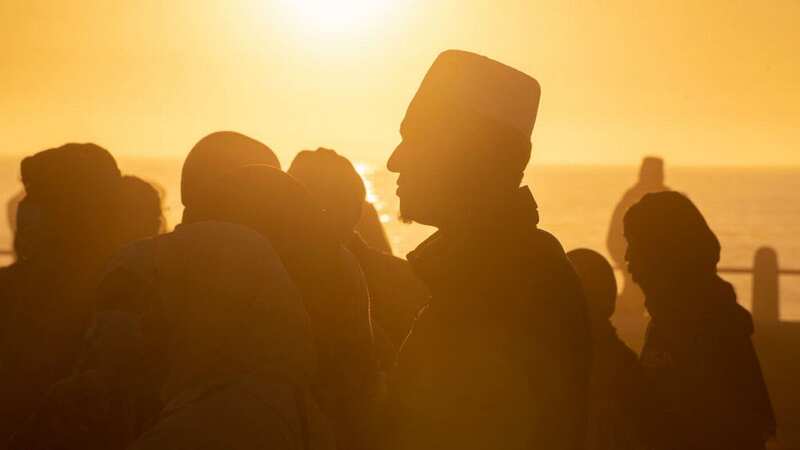

On the night of Sunday, March 11, the moon will be directly between the Earth and the Sun, appearing shrouded in darkness to observers on Earth.
But billions of people on Earth will be waiting for the first glimpse of the new moon, as it moves out of alignment a few hours after the new moon and a slim, silvery crescent becomes visible. The result, a slim crescent moon - which will also be a “super new moon” this month - holds greater significance than usual for the world’s two billion Muslims.
This is because the first sighting of the new moon this month will mark the start of Ramadan 2024. The Islamic calendar is based on the phases of the moon, unlike the Gregorian calendar, it starts when the new moon is spotted appearing in the sky and ends with the arrival of the next one.
As well as marking the start of the holiest month in Islam, the March new moon will also set in motion both a solar and lunar eclipse. The solar eclipse is due to appear just as Ramadan ends and the festival of Eid al-Fitr is celebrated.
According to eclipse expert Jamie Carter the new moon in March will occur at 9am on March 10, 2024, in London. It is called a “super new moon” because it will be near to the closest position to the Earth in its orbit when it first appears.
 'New Nostradamus' verdict on asteroid destroying Earth and how we can stop it
'New Nostradamus' verdict on asteroid destroying Earth and how we can stop it
For parts of the Muslim world that rely on the first visual sighting of the new moon to begin Ramadan, this will be after darkness falls on the evening of Monday, March 11 - as the crescent will be too small to see with the naked eye on Sunday, March 10. Other countries begin Ramadan at a set date and time when the new moon is known to have appeared somewhere.
The month of Ramadan will also see the full moon entering a penumbral lunar eclipse on Monday, March 25. People on the night side of Earth, including North and South America, Europe, East Asia, Australia and New Zealand will see the lunar eclipse as the moon moves through the Earth’s outer shadow in space.
The next new moon, as well as marking the end of Ramadan, will also be part of a rare astronomical event. On April 8, when the next new moon officially occurs (although it may not be observed until the 9th or 10th) will also mark a total solar eclipse for some viewers in North America, as well as being a “supermoon”.
This is an event which only happens once every 375 years, with the total eclipse on April 8 lasting up to 4 minutes and 26 seconds. However, only a relatively narrow part of the Earth will give the best show - a 125-mile wide path of totality.
But anyone in that path, which will stretch from the Pacific coast of northwestern Mexico to Atlantic Canada, passing through parts of 15 U.S. states: Texas, Oklahoma, Arkansas, Missouri, Illinois, Kentucky, Tennessee, Michigan, Indiana, Ohio, Pennsylvania, New York, Vermont, New Hampshire and Maine. Anyone outside that path will only see a partial solar eclipse.